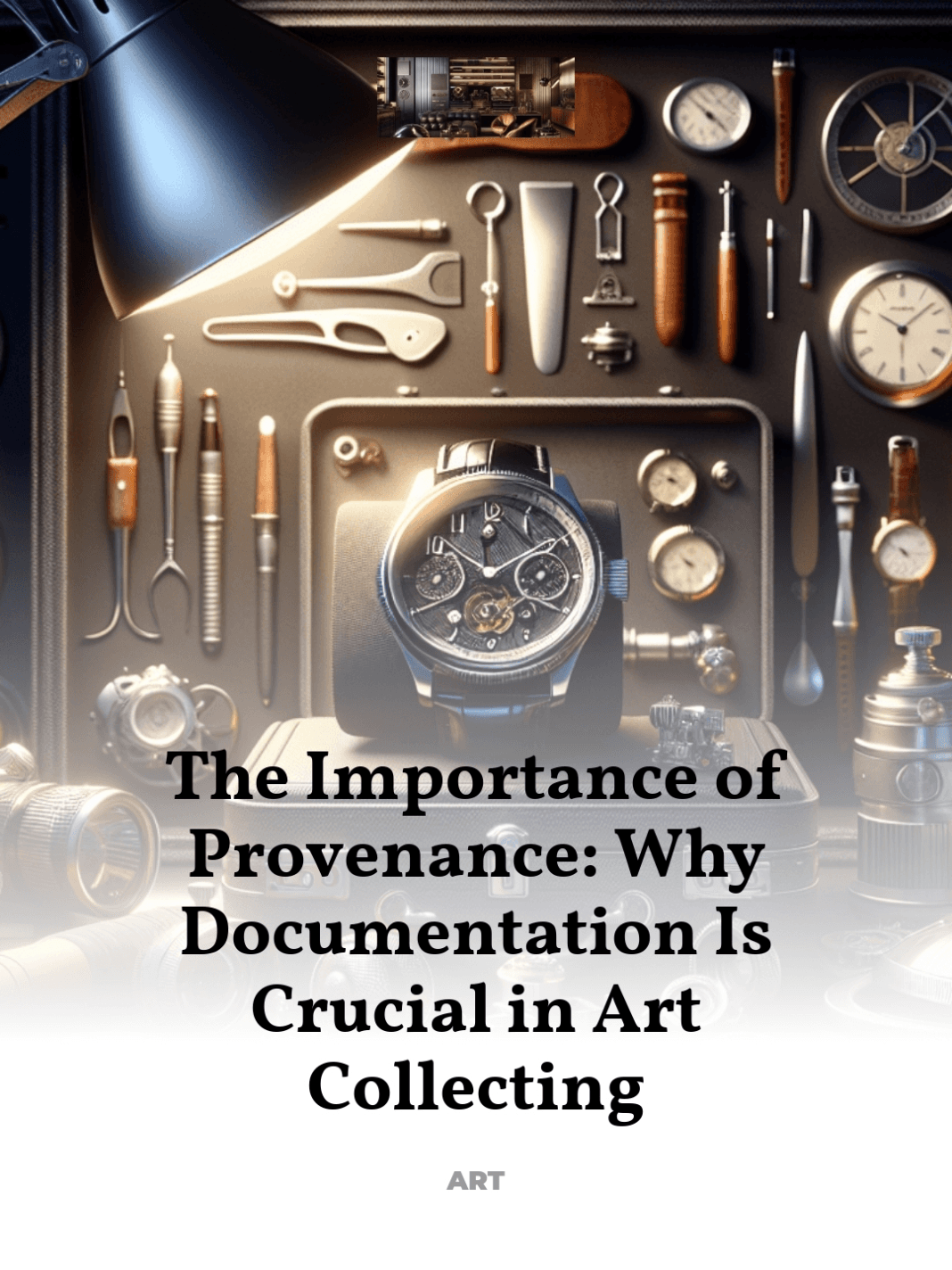How to verify authenticity and avoid costly mistakes
Understanding the provenance of an artwork is akin to uncovering its soul. It not only reveals the history and the hands through which the piece has passed but also authenticates its legitimacy and cultural value. For collectors of fine art, provenance is not just a matter of record but a cornerstone of the art’s intrinsic and historical worth.
- The Significance of Provenance in Art
- Methods to Verify Authenticity
- Common Mistakes in Art Collecting
- Provenance in Practice: Case Studies
- The Future of Provenance and Technology
The Significance of Provenance in Art
Provenance, or the history of ownership, plays a pivotal role in the world of art collecting. It provides a documented history that helps to establish an artwork’s authenticity, legality, and value. The provenance of an artwork includes details such as previous owners, places of storage, and the history of sales or transfers, which collectively contribute to the artwork’s narrative and authenticity.
- Authenticity: Provenance acts as a factual chronicle that helps to verify the authenticity of a piece. It is a critical tool in distinguishing originals from forgeries.
- Value: Artworks with a clear, prestigious provenance often have higher values. Provenance can add desirability, especially if previous owners were notable entities or individuals.
- Legal Ownership: Provenance can provide evidence of title, helping to resolve potential disputes over ownership, especially in cases involving looted or stolen art.
For instance, artworks with provenance from esteemed collections such as those of Peggy Guggenheim or Charles Saatchi not only carry the mark of authenticity but also a pedigree that enhances their market value.
Methods to Verify Authenticity
Verifying the authenticity of artwork is a meticulous process that integrates art forensics, historical research, and expert consultation. Here are several methods used by professionals to authenticate pieces:
- Scientific Analysis: Techniques such as radiocarbon dating, X-ray fluorescence, and infrared reflectography can help determine the age of materials and uncover underlying images or alterations not visible to the naked eye.
- Provenance Research: This involves tracing the history of the artwork through records such as auction catalogs, gallery records, and previous appraisals. Authenticity often hinges on a continuous and logical provenance trail.
- Consultation with Experts: Art historians and scholars who specialize in a particular artist or period can provide insights that are crucial for authentication.
For example, the authentication of a purported Leonardo da Vinci painting, Saviour of the World, involved extensive provenance research, scientific testing, and expert analysis before it was deemed genuine and subsequently sold for over $450 million.
Common Mistakes in Art Collecting
Even seasoned collectors can fall prey to pitfalls in the art acquisition process. Awareness of common mistakes can help in making informed decisions:
- Incomplete Documentation: Failing to verify or secure proper documentation can lead to disputes over authenticity and ownership.
- Ignoring Provenance Gaps: Unexplained gaps in an artwork’s history can be red flags indicating potential issues with authenticity or legal title.
- Overlooking Condition Reports: Condition reports provide a physical description of the artwork at the time of sale and are crucial for future conservation and valuation.
For instance, the purchase of a supposedly original piece without a thorough provenance check can lead to significant financial and reputational damage if the piece is later discovered to be a forgery.
Provenance in Practice: Case Studies
Real-world examples underscore the importance of diligent provenance research. The case of the Klimt painting, Portrait of a Lady, which was stolen in 1997 from an Italian gallery, highlights the critical role of provenance. It resurfaced in 2019, and through provenance research, it was confirmed to be the stolen original.
Another example is the Guelph Treasure, with a contested provenance that involves claims of forced sale during the Nazi era. The ongoing legal battles and research into its history illustrate the complexities of provenance in restitution cases.
The Future of Provenance and Technology
The future of art provenance lies in technology. Blockchain, for instance, offers a decentralized and tamper-proof platform for recording the history of artworks. Each transfer adds a block to the chain, creating a permanent record of ownership and provenance.
Digital databases and AI are also transforming provenance research by making it more accessible and comprehensive. These technologies not only enhance the accuracy of provenance records but also increase transparency in the art market.
In conclusion, the meticulous documentation of provenance is indispensable in art collecting. It ensures the authenticity, legal ownership, and value of artworks, thereby safeguarding the cultural heritage and legacy they represent.
For further exploration of the intricacies of art provenance, consider visiting authoritative sources such as the Getty Provenance Index.



